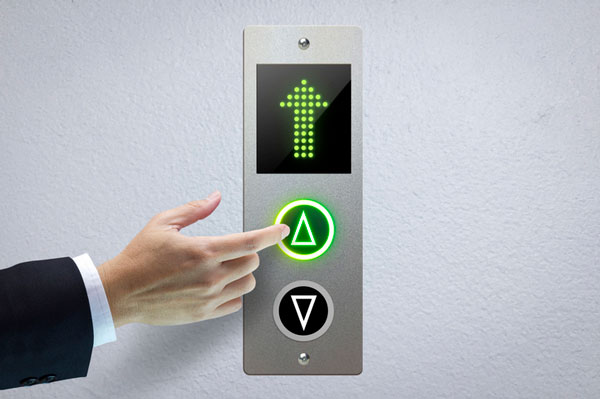Just in case you have recently started teaching CVC words and you are ready to teach the short U skill specifically, then keep reading!
I have taken some time to think over a few teaching ideas that have served me well over the years. This post will give you some ideas for several lessons you can use with your students for teaching short U.
In addition to that, you’ll get to see a word list of short U words that you can implement in any of the lessons you choose for your class. Are you ready for some fun with short U CVC words? Great! Let’s get started!
What Does Short U Sound Like?
Before getting to the list and to the lessons, let’s focus on the short U sound itself.
The sound for the short U is the same sound you hear at the beginning of the word “umbrella” and at the middle of the word “bus.”
In order for your students to make the short U sound with their mouths, have them open their mouths so it almost makes a circle. Their tongues should be toward the back of their mouths as they replicate the sound. There should be some ever so slight tension in the muscles of the mouth.
What Is a Short U CVC Word?
Now that we have clarity about the short U sound, let’s answer the question: What exactly is a short U CVC word?
CVC is an acronym meaning consonant-vowel-consonant. These are the words early readers are most likely to read successfully soon after learning their letters and sounds.
Most scope and sequences have teachers introducing short U CVC words near the end of the vowel sequence after short A, short I, and short O.
When I teach CVC words with short U, I have my students use labels over the letters in each word. This practice helps students to have an explicit understanding of CVC patterns. It also helps them to realize that the “V” stands for short vowel sounds, not just any vowel sounds.


List of Short U CVC Words
The following is a list of short U CVC words. I intentionally kept this list simplified by omitting words that had slightly more complex patterns like digraphs and blends. Feel free to pick and choose as many words from this list as you wish that would benefit any current CVC lesson plans you may have.
| Short U CVC Word Family | Short U CVC Words Within Each Word Family |
|---|---|
| -ub | cub, hub, nub, rub, sub, tub |
| -ud | bud, dud, mud |
| -ug | bug, dug, hug, jug, lug, mug, pug, rug, tug |
| -um | gum, hum, sum, yum |
| -un | bun, fun, pun, run, sun |
| -up | cup, pup, yup |
| -us | bus, Gus, pus |
| -ut | but, cut, gut, hut, jut, nut, rut |
| -ux | tux |


Teaching Ideas for Short U CVC
As mentioned earlier, the case may be that you don’t have any lesson plan ideas for teaching short U CVC. Maybe that’s why you’re here in the first place!
I assure you that by the time you are finished reading this, you’ll have plenty of nuggets to at least get you started.
Each of the lesson ideas in this article follows a research-backed sequence that you are likely to find in many structured literacy programs.
The examples that you will see illustrated throughout this post come from a resource I created called CVC Word Practice for Short U Digital Slides. This digital resource is a no-prep option designed to save you time and get you teaching the skill to your students right away.
Of course, if you’d rather go the traditional route, you can implement most of the same suggestions I make in this article by using materials you already have in your classroom instead.
How to Effectively Introduce the Short U Sound to Your Students for the First Time
Over the years, I’ve tried many approaches when it comes to introducing my students to new phonics skills. The most effective method by far that I have found is a speech-to-print approach.
This approach involves showing students a small collection of photos of objects or concepts that begin with the sound of the skill.
In the case of short U, you might show them a photo of “up” like this.


Have them say the word “up.” Then repeat this process with more photos. Soon enough, you will guide students to the realization that all of these words begin with the same /u/ sound.
As I mentioned earlier, you might want to have a brief discussion about mouth formation and even show students what their mouths look like in small mirrors if possible to build a stronger awareness and understanding of how to replicate this sound.


Next, we have come to the point where you’d want to introduce an embedded mnemonic of the letter U, like a U embedded within a picture of an umbrella. Here’s where students will make the connection between the sound they have been repeating and the letter grapheme that represents it.


To strengthen the connection, you can have students make a fun gesture like pretending to open an umbrella and hold it over their heads.
By the way, if you need some free embedded mnemonic cards to introduce short U and other letters, you can get a set when you join my newsletter.
Optional Initial Sound Substitution Warmup
For those students who could use some extra phoneme manipulation practice, try this optional warmup that involves initial sound substitution. You can do this simple exercise with a set of counters. Alternatively, you can use my digital slides.
Here’s an example of how it works: verbally say and/or show them a picture of the word “nut” with 3 counters representing the 3 phonemes of the word underneath. Then ask students to change the /n/ in “nut” to /h/.
If using classroom counters, you can have them physically replace the first counter with another counter to strengthen understanding. If using the slides, they will see this action animated for them.
Finally, ask students to say the new word, which would be “hut.” As you can see in the example image, my counters have letters on them. These letters are editable in case you’d rather stick strictly to phonemic awareness without the phonics element alongside it.


Teach Students to Decode Short U CVC Words
When students have a solid understanding of the sound for short U, we obviously want them to apply this knowledge by reading words with the short U sound. The easiest way to achieve this goal is to have them begin decoding short U words with the CVC pattern.
Now, the example I will use here will again be from my digital slides, but you can do the same thing if you have some letter cards in your classroom.
You will start by spelling out a short U CVC word with letter cards, such as the word “sun.” If using the slides, each letter will appear after you click. Students will then blend the sounds together to read the word.


You’ll notice in this example that, with the exception of the mnemonic U card, there is no picture accompanying the word “sun.” The picture of the sun only comes after students have successfully read the word.
Use Nonsense Words to Reinforce Proper Reading
As your students build their confidence decoding real short U CVC words, you can put them to the test by exposing them to similar nonsense words. Have students read CVC words with short U and decide whether or not the word is real or a nonsense word and sort accordingly.
Our digital slides use the concept of an alien visitor for this purpose, since some teachers have been known to refer to nonsense words as “alien” words.


As students complete the sort, you may wish to ask them to use each of the real words in a sentence that makes sense.
“I Spy” Phoneme Segmentation/Blending Game
Another fun way for students to apply their growing knowledge of short U CVC words is with an “I Spy” game that incorporates some phoneme segmentation and blending.
You would start by showing students an entertaining scene with a lot of short U CVC word pictures hidden within it. Then you might choose one student to call out one thing that they spy. The catch, though, is to make sure you direct them beforehand to segment the word of what they see. For example, they might say, “I spy a /b/ … /u/ … /g/.”


Then it would be the job of someone they choose or the rest of the class to call out “bug.”
Another way to go about this activity is for you as the teacher to do the calling and segmenting instead.
Teach Students to Encode CVC Words with Short U
Just as important as decoding, or reading words, is the ability to encode, or spell them.
Pass out some writing supplies to your students. They could use pencil and paper, or you could maybe make it a little more fun with dry erase boards and markers.
Next, call out a short U CVC word like “mud,” for instance. When you do this, the students should be working to break the word into its individual phonemes. They might even hold up a finger for each sound they hear in the word.
You can reinforce this by using our digital slides, as you’ll see a display of a cute picture along with the empty sound boxes. As students sound out the word, you can click, and a pointer will appear underneath each sound box.


Have students write down the letters they think represent each of the sounds. You can then continue to click to have students check their work!
Short U CVC Word Chains with Mystery Pictures
Another super fun component of the digital resource is the inclusion of four short U CVC mystery picture slides. Time and time again, this proves to be a favorite among my students!
Here’s how the mystery picture slides are structured: each mystery picture slide is sequenced into a word chain of nine words. By word chain, I mean only one sound changes from one word to the next.
There is a fun photo of a short U CVC word on each slide, hidden behind the word chain. You can have your students guess what the hidden photo might be before starting.
Then instruct your kids to read the words from the top row to the bottom, from left to right. As they read each word, you can click the mouse, and the word will disappear. If you wish, you can set the pace of the reading by the speed of your click to foster improved fluency.
Read Decodable Sentences Containing Short U CVC Words
Beyond mastery of short U CVC words, the next goal is sentence proficiency. Now’s the time to get your students reading simple, relatable sentences with short U CVC and other decodable words!
In order to do this, plan out several sentences that have three to six words each. Each sentence should have at least one short U CVC word. Also, sentences can include CVC words with other short vowels you have already introduced.
Make sure that kids are familiar with any sight words or heart words you include. If necessary, introduce these to them beforehand. Our digital slides include several decodable sentences preceded by slides to introduce the heart words they include.


By the way, there are plenty of ways you may choose to display these sentences. If you are not using the slides, you can use sentence strips on a pocket chart or just write them on your board, among other ways.
If you do decide to use the slides, you can click to make each word appear as students read them. On the final click after the sentence, there will be a picture appearing above it.


Some sentences feature scooping to aid in more fluent phrasing while reading.
Short U CVC Sentence Dictation
Just like encoding words is to writing them as decoding words is to reading them, the same goes for what sentence dictation is to decoding sentences. It’s just as important for students to be able to write sentences as it is for them to read sentences.
That’s why I’m including sentence dictation as a crucial component to teaching short U CVC words and why I included dictating sentence opportunities in my slides.
This activity is set up essentially the same as the encoding lesson from earlier. You will recite a sentence to your kids. They will hold up one finger for each word as they say each word. You can click for a corresponding word box to appear.
Then students will try to write the sentence on paper or a dry erase board.


Direct them to point as they reread and double-check their sentence. Afterwards, click to reveal the words of the sentence so students can check their work.
My short U CVC digital resource contains 10 sentence dictation slides. You can get 10 more for free by downloading this other short U resource devoted entirely to sentence dictation that has both printable and digital options.
Teach Short U CVC Words with a Structured Literacy Approach
So that’s it! With the list and the lesson ideas I just shared with you, you should be all set with teaching short U CVC words to your students.
If you’d like to save some prep time and implement these ideas much quicker than using your materials, you can access my no-prep short U CVC digital slides by clicking this link or the image below.


If you work with older students who need some help with this skill but might find the clip art pictures in this resource too babyish, you can try this short U CVC alternative with real photos.
Here are a few more related resources you might want to share with your students:
Last but not least, if you want to follow the same format I presented in this article as you teach all the short vowel CVC words, you can get the entire bundle of related resources at a discount.
There you have it! You’ve got what it takes to have your students mastering short U CVC words in no time. I look forward to hearing about your students’ successes!

